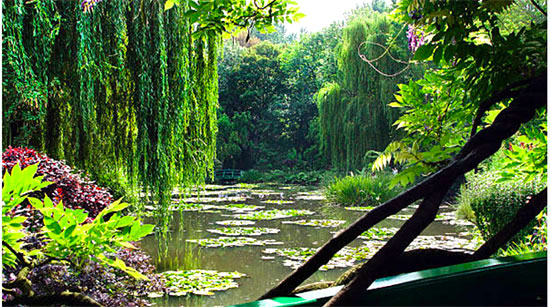
Claude Monet and the gardens of Giverny

The gardens of Giverny, certainly among the most famous in the world, were created by the French impressionist painter Claude Monet. He immortalized them in some of his most beautiful works. Located about 80 kilometers from Paris, these gardens are a must-visit place for all art and nature lovers.
Monet began working on the gardens of Giverny in 1883 when he bought the property. Working for more than 40 years on the creation and maintenance of his green spaces, he transformed them into a true living masterpiece. The painter then took these fabulous natural spaces as a motif and source of inspiration for numerous paintings, including those in the series of water lilies.
The gardens of Giverny are divided into two main parts: the water garden and the Clos Normand. The water garden, with its famous Japanese bridge and floating water lilies, is probably the most famous part of Giverny. The Clos Normand, on the other hand, is a traditional flower garden, crossed by winding paths, all lined with flowers of all kinds.
The water garden is the largest and most impressive of the two gardens. Monet created a pond of 2.5 hectares, fed by a small river called the Ru. He planted water lilies in the pond, as well as other aquatic plants, creating an oasis of calm and beauty. The famous Japanese bridge spanning the pond has become a symbol of the gardens of Giverny and has appeared in many of Monet's paintings.
The Clos Normand is the master's traditional flower garden. It is located right next to his house, planted with "Japanese-style flowers": roses, peonies, tulips, and irises to name a few. Monet designed the garden for the sole purpose of feeding his painting by creating a festival of colors.
In addition to his famous gardens, Monet's property in Giverny also includes a large Norman-style house. The building was constructed in 1883 and was expanded several times. The painter decorated the house in a style that reflects his love of nature, with furniture and accessories made of wood, rattan, and wicker. The house was opened to the public in 1980 and is now a museum.
Claude Monet passed away in 1926. The gardens of Giverny remain a popular attraction for art lovers and garden enthusiasts. In 1966, the Claude Monet Foundation was established to fund the maintenance of the gardens.
IC